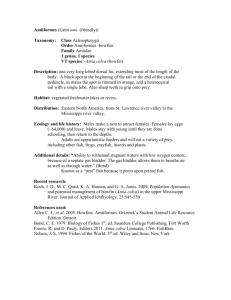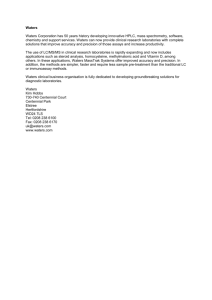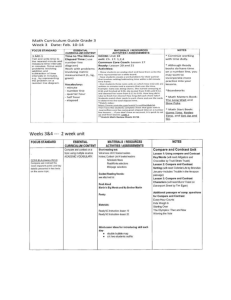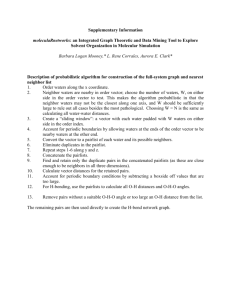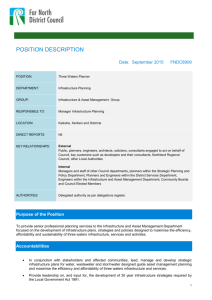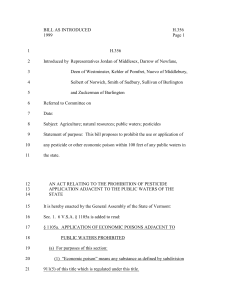Rachel Valliere Mugiliformes (Latin mugil – (mullet)) Taxonomy
advertisement
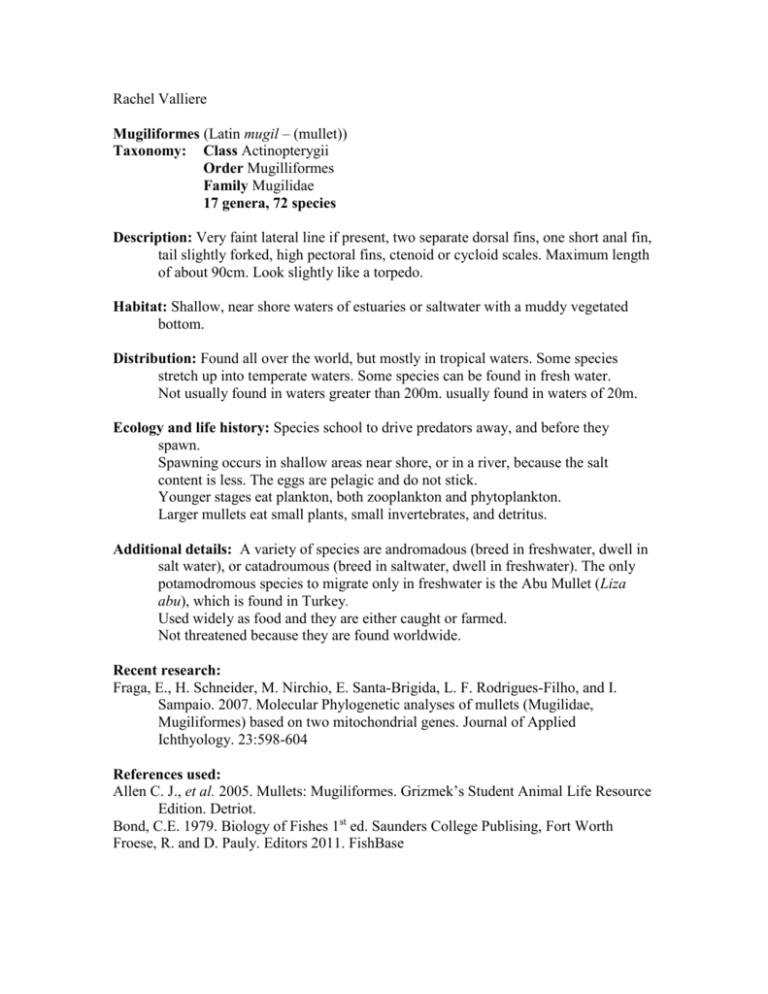
Rachel Valliere Mugiliformes (Latin mugil – (mullet)) Taxonomy: Class Actinopterygii Order Mugilliformes Family Mugilidae 17 genera, 72 species Description: Very faint lateral line if present, two separate dorsal fins, one short anal fin, tail slightly forked, high pectoral fins, ctenoid or cycloid scales. Maximum length of about 90cm. Look slightly like a torpedo. Habitat: Shallow, near shore waters of estuaries or saltwater with a muddy vegetated bottom. Distribution: Found all over the world, but mostly in tropical waters. Some species stretch up into temperate waters. Some species can be found in fresh water. Not usually found in waters greater than 200m. usually found in waters of 20m. Ecology and life history: Species school to drive predators away, and before they spawn. Spawning occurs in shallow areas near shore, or in a river, because the salt content is less. The eggs are pelagic and do not stick. Younger stages eat plankton, both zooplankton and phytoplankton. Larger mullets eat small plants, small invertebrates, and detritus. Additional details: A variety of species are andromadous (breed in freshwater, dwell in salt water), or catadroumous (breed in saltwater, dwell in freshwater). The only potamodromous species to migrate only in freshwater is the Abu Mullet (Liza abu), which is found in Turkey. Used widely as food and they are either caught or farmed. Not threatened because they are found worldwide. Recent research: Fraga, E., H. Schneider, M. Nirchio, E. Santa-Brigida, L. F. Rodrigues-Filho, and I. Sampaio. 2007. Molecular Phylogenetic analyses of mullets (Mugilidae, Mugiliformes) based on two mitochondrial genes. Journal of Applied Ichthyology. 23:598-604 References used: Allen C. J., et al. 2005. Mullets: Mugiliformes. Grizmek’s Student Animal Life Resource Edition. Detriot. Bond, C.E. 1979. Biology of Fishes 1st ed. Saunders College Publising, Fort Worth Froese, R. and D. Pauly. Editors 2011. FishBase
